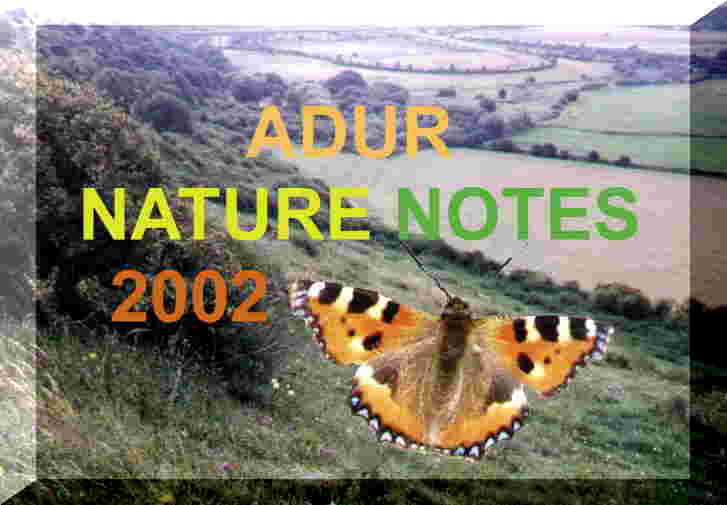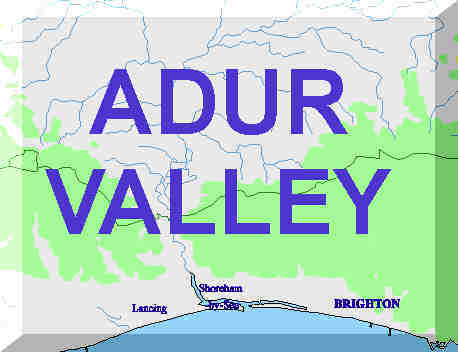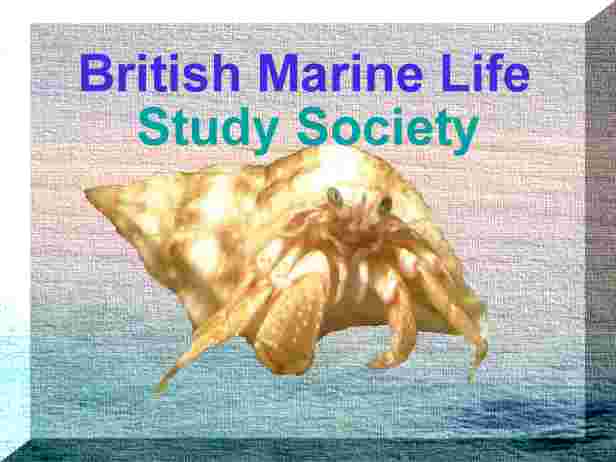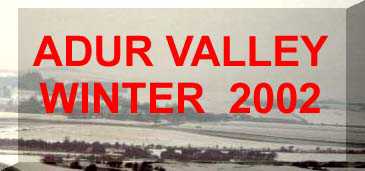27
June 2002
Scarcely
more than small specks in the sky through a camera lens, the black outline
of Swifts
high over Lancing was
a sight that is rarely noticed over Shoreham town. Thanks to Ray
Hamblett for pointing out these birds that I had overlooked before.
New
Monks Farm, Lancing, was completely covered in all the common wild
plants like an overgrown garden. A few Meadow
Brown Butterflies fluttered amongst the
weeds.
26
June 2002
Dragonflies
A
Scarce Chaser Dragonfly, Libellula fulva, was
present on the River Adur near Shermanbury
(TQ 219 190). According to Sussex
Biodiversity it has been recorded on two
occasions in June in 1995 and 1998 on the River Adur at Shermanbury. Nationally,
this is a scarce species.

Allen
Pollard's Then & Now web pages (Bugs 3)
They
are definitely Scarce Chasers: they are more
common the Broad-bodied Chasers in the upper Adur area and another good
place to see them is Bines Bridge. The White-legged
Damselfly is a rare British species but is typical of the habitat in
the upper Adur area.
Note:
Libellula
fulva has a triangular black spot in the base of each hind wing, and
is therefore easily distinguished from Orthetrum
species. They often have black wing tips, but some individuals don't. Older
individuals get blue-grey eyes.
European
Dragonflies Picture Gallery
UK
Wildlife Yahoo Group
UK
Dragonflies Yahoo Group
Freshwater
Life of North-western Europe Smart Group
About
20 blue damselflies hover around the stream at the Cokeham reed beds site.
They were identified as Azure Blue Damselflies,
Coenagrion
puella, some in tandem with females. Another similar species, the Common
Blue Damselfly,
Enallagma cyathigerum,
may also have been present. Four individuals of the Large
Red Damselfly,
Pyrrhosoma nymphula,
were also seen.
Lancing
Nature Newsletter - June 2002
25
June 2002

White-legged
Damselflies, Platycnemis
pennipes, were flying and settling over the freshwater reaches
River
Adur. The were loads of them. The location was west branch of the Adur
east bank, about half mile up from the Bull pub and the lock bridge (near
Shermanbury).
Allen
Pollard's Then & Now web pages (Bugs 3)
An
Emperor
Dragonfly was seen eating a Broad-bodied
Chaser Dragonfly at the Larkfield
Paddocks, Lancing. In the same area a Red-veined
Darter Dragonfly, Sympetrum
fonscolombi, was recorded for the first time.
Adur
Damselflies & Dragonflies
Freshwater
Habitats of the Lower Adur Valley
 I
inadvertently flushed a Grey Partridge
near New Erringham Farm, which flew strongly away in a straight low level
flight above the field of grass and poppies. On the bridlepath from Slonk
Hill to New Erringham, there were scores of hirundines, including at least
one Swallow,
although all of them could have been these birds swooping for insects.
Butterflies
on the route included 12
Small Tortoiseshell
Butterflies and
4
Painted
Lady Butterflies. Some of the
Painted
Ladies at Mossy Bottom were badly faded and
had lost their bright colours. I
inadvertently flushed a Grey Partridge
near New Erringham Farm, which flew strongly away in a straight low level
flight above the field of grass and poppies. On the bridlepath from Slonk
Hill to New Erringham, there were scores of hirundines, including at least
one Swallow,
although all of them could have been these birds swooping for insects.
Butterflies
on the route included 12
Small Tortoiseshell
Butterflies and
4
Painted
Lady Butterflies. Some of the
Painted
Ladies at Mossy Bottom were badly faded and
had lost their bright colours.
Mill
Hill Report
 23
June 2002 23
June 2002
Banded
Demioselles mating in appreciable numbers on the River
Adur near Shermanbury.
A
Scarce
Chaser Dragonfly (pic)
was
also identified and
Mayflies.
Several
enthusiasts confirmed the not completely clear photograph as a
Scarce Chaser Dragonfly.
Allen
Pollard's Then & Now web pages (Bugs 3)
UK
Dragonflies Yahoo Group
Adur
Damselflies & Dragonflies
European
Dragonflies Picture Gallery
22
June 2002
The
revisions to the proposed boundaries of the South
Downs National Park have been announced.
In
the Adur Valley the following proposals have been accepted:
12.
Inclusion of Steyning and Bramber
13.
Inclusion of bits of the Lower Adur valley near Steyning and Bramber, but
excluding some of the water meadows
43.
Inclusion of the area west of Hoe Court Farm, Lancing, including McIntyres
Field
The
following are amongst those rejected:
14:
Exclusion of Upper Beeding and Horton Hall.
Countryside
Agency
National
Park Designation Team
21
June 2002
Summer
Solstice 2:11 pm.
 19
June 2002 19
June 2002
On
a pleasant sunny day after a generally inclement spring, it was nearly
the solstice before I made my first eventful trip to Mill
Hill. Most
noticeable was the field of Common
Poppies grazed by a dozen or so cows between
Mill Hill and Buckingham Barn, and also bright red fields to the north-east
and on the ridges, highest points of the downs.
Opium
Poppies (escaped cultivated ones) were
common in the disturbed land for the widened road in the north-west corner
of Shoreham Airport.
Butterfly
Report
Adur
Levels Report
17
June 2002
An
Emperor
Dragonfly flies over the reeds at Lancing
Ring dewpond
(TQ 181 065).
Adur
Damselflies & Dragonflies
British
Dragonfly Society
Dragonfly
Flight Periods in Ireland
European
Dragonflies Picture Gallery
The
large brown butterflies in Shoreham town were not identified in a hot and
humid 22° C day. These are almost certainly Meadow
Browns.
16
June 2002
My
Lancing garden nature pond (TQ
186 044) was visited by a male Blue-tailed
Damselfly, Ischnura elegans. This
is a common local species and common throughout England. A
Painted
Lady Butterfly settled.
In a garden
pond near Buckingham Park, Shoreham, (TQ
219 063) the first Froglets
are leaving the water and they probably have for sometime now. However,
other tadpoles are less developed and the later ones have not yet developed
any of their legs.
 13
June 2002 13
June 2002
The
stream that ran through Sompting Water
Meadows (Lower
Cokeham reedbed and ditches, Lancing) produced
an interesting selection of freshwater animals. Amongst the reeds (Common
Reed, Phragmites australis) and
in the areas of heavy vegetation and heavy pigmented water (it looked like
weak tea, stained with dissolved organic matter) the small fish called
the Ten-spined
Stickleback, Pungitius pungitius,
was discovered in the dip net, together with some very small beetles. The
local name is 10-spined although the book name is usually 9-spined and
the large specimens had at least ten spines. My knowledge and experience
in this field is limited but my tentative first identifications were as
follows:
 black
diving beetle, Agabus sp. black
diving beetle, Agabus sp.
Lesser
Water Boatman, Corixa sp.
A
Pond
Skater,
Gerris sp., quickly skated
across the surface film of almost still water. A dip amongst the lily pads
produced a Common Froglet with
four developed legs (pic) and almost
ready to leave the water, although it still had its complete tail. Snails
were numerous including the Great Pond
Snail and the attractive Ramshorn
Snail. The Water
Louse, Asellus, was a common species
in the water weeds.
The
largest and most distinctive animal was the Diving
Beetle, Dytiscus
semisulcatus,
which is a large beetle capable of attacking and killing small fish. This
species was identified from the photograph above by Phil
Wilkins. This is one of five species of
Dytiscus
beetle
found in England.
Cokeham
Reed Beds (Sompting)
Freshwater
Habitats of the Lower Adur Valley
Freshwater
Life of North-western Europe Smart Group
On
Widewater
Lagoon, a pair of Mute Swans
to the west of the small bridge were accompanied by ten
cygnets. The lagoon was in flood after
the recent heavy rain.
13
June 2002
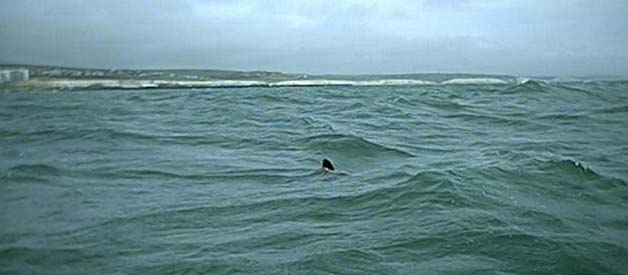
A Basking
Shark was spotted off Brighton Marina by the Fisheries Protection
Vessel "Sea Harrier" (Sussex Sea Fisheries Committee).
 11
June 2002 11
June 2002
The
presence of Spiny
Spider Crabs, Maja
squinado, underneath the wooden groynes on Shoreham beach (TQ
216 047), south of Weald Dyke (road), is a
notable aspect of the wildlife fauna of Shoreham and little known. Although
it is the smaller crabs that are found at low
tide, these are still the biggest animals found between the tides. Berried
(ovigerous) Shore Crabs were also present.
Seashore
(Shoreham Beach)
British
Marine Life Study Society
BMLSS
Rockpooling
8 June
2002
In
a rainwater drainage ditch (TQ 185 049)
close to our Lancing home we have discovered a habitat of the Horse
Leech, Haemopsis sanguisuga. (Pic.)
These
drain ditches are linked to a freshwater brook in Lancing, which meets
the sea at a number of outlets including the River Adur
at Shoreham. Normally at this time of the year this ditch has dried up
but due to the high rainfall remains wet.
Further
Information on the Horse Leech
5
June 2002
Dawn
saw light and steady rain which continued heavier and without a break throughout
the day and into the hours of darkness, not easing off until 9:00 pm, and
attaining a total of at least 35.81 mm, which was the greatest daily rainfall
total on record since the sodden October
2000.
This
rainfall figure has now been changed to 28.2 mm on the web page below.
Shoreham
Beach Weather Records (Monthly Summaries)
5 -
14 June 2002
The
Adur
Valley Biodiversity Network 2002 Exhibition commences in the Adur
Civic Centre foyer.
Static
display of biodiversity (wildlife) information for the Adur
District and lower valley, including the wildlife of Lancing from the
"Friends of Lancing Ring" and
marine wildlife from the "British Marine Life Study Society" and
photographs from the Adur
Valley Eforum Smart Group.
The 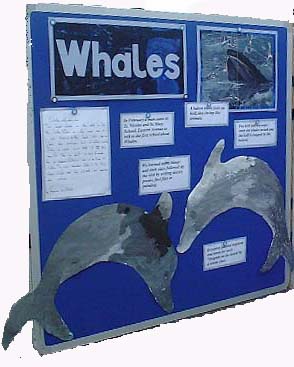 display
will include David Wood's
selection of wildlife photographs of the shingle
plants of Shoreham beach including a photograph of the Tree
Mallow. display
will include David Wood's
selection of wildlife photographs of the shingle
plants of Shoreham beach including a photograph of the Tree
Mallow.
A late
addition is the wonderfully interesting work of the young children of St.
Nicolas and St. Mary school on Whales and Dolphins.
5 June
2002
The
Greater
Spotted Woodpecker continues to pay regular more than once a day
visits to my Shermanbury
garden. One of the parents brought their offspring
over to feed. They are quite shy birds but
one tried to fly in the house via the patio door.
3
June 2002
The
number of Little Egrets
between Cuckoo's Corner and the A27 Flyover recorded at four. This seems
to be the number regularly on the lower Adur,
but they are rarely seen altogether in one place. At least one seems to
be a permanent resident egret at Widewater,
so the number may be greater than this.
Consensus
Report from several sources
2 June
2002
The
new Adur
Valley Biodiversity Network Smart Group commences, designed for biological
recording in the Adur District and valley.
For
technical recording and computer reasons, the full services will not be
available until next month.
Common
Spotted Orchids are coming into flower
on
Beeding Hill (TQ
208 096).
Orchid
and Wild Shingle Flower Images
1 June
2002
A
huge one metre in diameter jellyfish with a humped appearance was discovered
washed up on
Shoreham beach due of south of Coronation Green. This is the species known
by several common names: Barrel Jellyfish,
Football Jellyfish, Root-mouthed Jellyfish, and with the scientific name
of Rhizostoma pulmo. This
is an unusual sighting off the Sussex coast, but this year tens of thousands
have been seen off the coast of Cornwall, with many more washed up on the
coast of Devon and Dorset.
British
Marine Life Study Society
Seashore
(Shoreham Beach)
Other
Reports
BMLSS
Jellyfish
Marine
Wildlife of the North-east Atlantic Ocean Group
1
June 2002
Adur
WORLD
OCEANS DAY Exhibition at Coronation
Green, Shoreham-by-Sea.
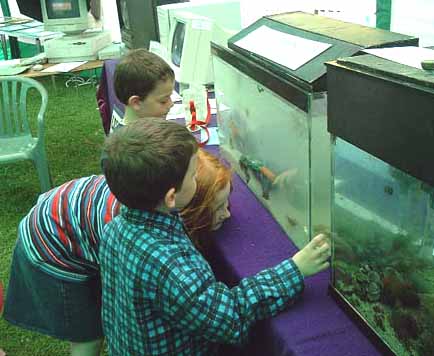
Adur
was one of the leaders in the United Kingdom when it presented an Exhibition
celebrating the official World Oceans Day. The event
took place on Saturday 1 June 2002
in Shoreham-by-Sea, on Coronation
Green (TQ 216050), adjacent
to the footbridge over the River
Adur, with the start of the Adur Festival.
CLICK
ON THE IMAGE ABOVE FOR MORE INFORMATION
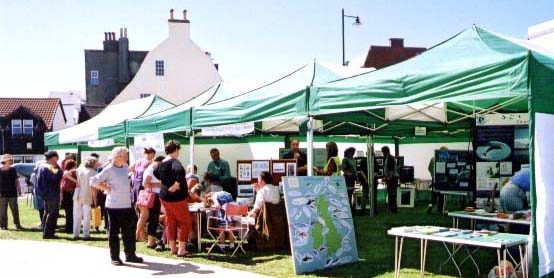
Adur
World Oceans Day Picture Portfolio 2002 (by
Ray Hamblett)
Adur
World Oceans Day 2002 Programme of Events
Adur
World Oceans Day 2001 Report
Adur
World Oceans Day Picture Portfolio
World
Oceans Day Smart Group
A Roe
Deer was seen trotting along the margins
of Adur Recreation Ground only the span of the Norfolk Bridge away from
Shoreham town centre.
27
May 2002
A
pod of dolphins, probably Bottle-nosed
Dolphins, were seen off Lancing
beach. They appeared dark in colour, described as black rather than
the grey of the life-sized artificial dolphin on display at Adur
World Oceans Day 2002.
Report
by Russell at Adur World Oceans Day 2002
BMLSS
Whales and Dolphins
Sussex
Dolphins
Sea
Watch Foundation
Marine
Mammals of the English Channel Smart Group
26
May 2002
A
pair of Kingfishers are nesting near
Cuckoo's Corner, by the Adur inlet south of Coombes.

A Sting
Winkle, Ocenebra
erinacea, was
discovered feeding on a mussel on Kingston beach,
Shoreham-by-Sea. This is an unusual find on the shore, and I have never
discovered a live specimen before on this particular beach in thousands
of visits over 20 years.
BMLSS
Molluscs
BMLSS
Rockpooling
21
May 2002
A
Cuckoo
is seen and heard at Passie's Pond, north of Coombes, between Cuckoo's
Corner and Botolphs (see the report below) with a
Little
Grebe, diving for small fish.
The
day is noted for rain, squalls and brief claps of thunder.
An
unseasonal
Red Admiral Butterfly flutters around
the shrubbery by the Co-op store near Lancing station (TQ
182 043).
20
May 2002
I
was walking in the Chalk Pit at Lancing
Ring and an Orange Tip Butterfly passed
by (TQ
186 062).
Lancing
Butterflies
20
May 2002
My
first Red Admiral Butterfly
of this year, north of Partridge Green away from houses.
Adur
Butterflies
17
May 2002
The
shade temperature reaches 24.6° C at 3:42 pm.
 16
May 2002 16
May 2002
A
sudden mini heat wave saw the temperature soar rapidly to a high of 21.8°C.
Small
White and Holly
Blue Butterflies were widespread and numerous.
Shoreham
Beach Weather Records
Beaufort
Scale (BMLSS)
15
May 2002
A Cuckoo
was seen flying and heard calling in the early evening at Botolphs. Botolphs
is two miles north of Cuckoo's Corner, a known area for Cuckoos.
c.
12 May 2002
A
male Cuckoo Wrasse,
Labrus
bimaculatus, caught by a boat angler at a mark known as the Waldrons
off Littlehampton, one of the few places off Sussex where this fish is
regularly found. The fish was kept alive and returned to the sea at Shoreham
Harbour.
Report
by Bob Squires (Southwick)
BMLSS
Wrasse page
12
May 2002
Sometimes
even clearly seen larger gulls can be a problem to identify. The pair of
gulls on a house at the southern end of Eastern Avenue, Shoreham (near
the crossing gates) (TQ 224 053),
roost on rooftops like Herring Gulls,
with very dark grey, almost black primary feathers look like Lesser
Black-backed Gulls, their call is a yapping
less harsh than Herring Gulls, but they have bright pink legs, nearer Herring
Gulls that the the yellow/green of the Lesser Black-backed.
Previous
Report 2001
 9
May 2002 9
May 2002
The
small
blue damselflies were climbing out of the ponds at Woods Mill (Sussex
Wildlife Trust, Small Dole). They had not coloured up so it is difficult
to identify the species.
It
could be the Blue-tailed Damselfly, Ischnura elegans.
British
Dragonfly Society
Dragonfly
Flight Periods in Ireland
Dragonflies
of Surrey
Odonata
Emergence in Surrey
Freshwater
Life of North-western Europe Smart Group
8 May
2002
A
handful of 7-spot Ladybirds crawling
over the mussels and barnacles
on Old Fort beach (Adur estuary side) were an
incongruous sight. Maybe, it is a prelude to a mass invasion that occurred
during the summer in the mid to late 1970s. The very small fish in the
sandy pools were Common Gobies, and where
the new concrete harbour walls had replaced the rotting wooden structures,
the new high level pools created, draped with Enteromorpha
(green seaweed) and Channelled Wrack,
Pelvetia,
provided a low neap tide niche for young Blennies.
4 May
2002
Orange
Tip Butterfly seen on McIntyres field,
near Lancing Ring. There was also a Fox
stalking Rabbits
on Barton's Farm field.
Lancing
Butterflies
1 May
2002
The wind had died down to
a steady breeze and there were brief spells of sunshine. On the east bank
of the River Adur opposite Cuckoo's Corner, a light-bellied Brent
Goose took off, the bird standing out through its sheer size,
quickly joined by another goose. A Meadow Pipit
shot up rapidly from the meadow very close to the saltings at high tide.
Shoals of hundreds of 3-spined Stickleback
fry
(identity not confirmed) and adult fish
were easily see in the brown unattractive streams that ran across the water
meadow, where Mallards took to the
air, when disturbed. A tractor was spreading seed (probably) over the grassy
water meadow, presumably clover etc. to enrich the pasture for cows
later on in the year. Peacock Butterflies
were common with the occasional Small Tortoiseshell.
There
were several hundred empty discarded shells (exoskeleton) of the Shore
Crab on the strandline all along the
riverbank.
Ecdysis
of Crustacea
Adur
Levels

 29
April 2002 29
April 2002
In
a water cistern on
Lancing Manor allotments Backswimmers
(Greater Water Boatman), Notonecta
sp., swim upside down as normal.
28
April 2002
Common Terns,
with their distinctive forked tails, were swept inshore by the unseasonal
gales, and seen buffeted about over the River Adur estuary,
opposite the houseboats in the centre of Shoreham
town.
BMLSS
birds (with a photograph)
Beaufort
Scale (sea)
25
April 2002
The
distinctive white underside
of at least four immigrant
Wheatears were unmistakable on the seaward
side of Widewater, perching on  the
wooden posts (that comprise part of the sea defences running parallel with
the sea) before the bird flew rapidly around, before embarking on their
destination flights inland to the downs. the
wooden posts (that comprise part of the sea defences running parallel with
the sea) before the bird flew rapidly around, before embarking on their
destination flights inland to the downs.
A clump
of Squid eggs were washed ashore on
Lancing
beach.
But
otherwise the rockpooling fauna was disappointing
compared to the excellent discoveries of the previous month.
Hairy
Crabs were frequently discovered (25 +) under the flint rocks and the
underside of rocks were encrusted with sessile colonial bryozoans.
Adur
Valley Wildlife Database
British
Marine Life Study Society
24
April 2002
A
Painted
Lady Butterfly was spotted just north
of the monastery off the A281 a
mile north of Shermanbury.
Immigration
of Lepidoptera
In
my garden at Shermanbury
several small damselflies make an early appearance. They were very dainty,
only about 33 mm long with red abdomens and green heads, appearing like
ghosts. The description does not seem to fit exactly, but I am tempted
to think this can only be the Large Red
Damselfly, Pyrrhosoma
nymphula.
Photograph
of this species (Link)
British
Dragonfly Society Species Checklist
Dragonflies
of Ireland
Adur
Damselflies & Dragonflies
My
garden also hosts regular visits from a Greater
Spotted Woodpecker and daily visits of
Nuthatches
feeding on wild bird food and Dunnocks.
Bats
chase flies at dusk.
22
April 2002
Just
after midday, traffic stopped on the main A27 Dual Carriageway at Lancing
Manor to allow a Duck and six ducklings
to cross four lanes of traffic.
A couple
of Cormorants
are feeding on Eels,
the fish twirling around their long beaks as the bird successfully swallows
its prey, as the rising tide just covers the mussel
beds opposite Coronation Green,
Shoreham
town centre.
Peacock
Butterflies are regularly seen fluttering
about in town and countryside.
Adur
Estuary
21
April 2002
A
varied melody of bird song was exceptional by the waterworks north of Old
Shoreham, including the prolonged call of a Skylark.
The
edge of the sluggish stream near the Steyning Road (TQ
209 068) appeared as a continuous black mass
of tadpoles (Common Frog)
thinning out towards middle. No legs had yet appeared on the tadpoles.
Freshwater
Life of North-western Europe Smart Group
20
April 2002
The
exceptional flash of colour was a Jay
flying
from the railway embankment to a garden at the southern end of Ravens Road
in Shoreham (TQ 217 053).The
Jay
is
found locally where there are
large gardens and heavily vegetated parks and waste ground but it is not
seen very often and could disappear in some areas if development is allowed.
Ravens Road is an old country lane known as Green Lane in the 18th century. are
large gardens and heavily vegetated parks and waste ground but it is not
seen very often and could disappear in some areas if development is allowed.
Ravens Road is an old country lane known as Green Lane in the 18th century.
Cowslips
are in flower beside the cycle path from
Old Shoreham to Beeding (TQ 198 084) just
before the Cement Works.
Report
by Mick Bowen
19
April 2002
The
medium-sized, quite pretty, and undoubtedly a very common yellow moth with
brown spots on the edges of its wings came inside my Shoreham flat (TQ
224 053), attracted by the aquarium
lights. I have identified this moth as the Brimstone
Moth, Opisthograptis luteolata,
with a caterpillar that feeds on Hawthorn.
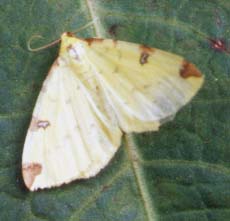
17
April 2002
A
Holly
Blue Butterfly was spotted laying eggs
in the flower buds of a Holly bush in my south Lancing garden (TQ
186 044).
Lancing
Butterflies
Lancing
Nature Nature Newsletter (April 2002)
A Song
Thrush was out of place on Coronation
Green by the River Adur estuary, but it is
a short flight from St, Mary's churchyard, Shoreham.
16
April 2002
Small
White Butterflies are in flight in town
gardens everywhere.
On
the shingle bank of Widewater a Ringed
Plover flew rapidly towards the seashore.
This is a potential breeding are for these small wading birds if they are
not disturbed by Crows
or dogs.
15
April 2002
Adders
are reported from the pathways and margins of Lancing Ring including a
melanistic (black) snake in woodland.
Report
by Veronica Eltringham (FOLR)
14
April 2002
After
no rain for almost a month, an adult Common
Frog is found in a Shoreham garden pond
(TQ
219 063), probably returning to water to get
moist as they have been known to do in large numbers (hundreds in a small
pond) during dry periods.
Tadpoles
11
April 2002
It
was their calls that first attracted by attention, but in the distance,
two
Lesser Black-backed Gulls
nuzzled each other on Kingston beach, which
looked to me like a mating ritual, although they are not known to breed
in this part of Sussex. I later saw a pair of the same gull species, (possibly
the same pair) on the roof of a wharf warehouse to the east of the Hamm,
Shoreham.
(NB:
Subsequent
observations indicate that this pair could be Herring
Gulls.)
11
April 2002
The
Little
Egret on Widewater
Lagoon has been an almost permanent resident for at least six months
and an regular visitor before that. Every time I cycle past, I expect to
see this attractive white bird with a long black beak feeding in the shallows.
On this occasion the egret was feeding avidly and I could see the flash
of the the silver flanks of the 3-spined Sticklebacks
as they were gulped down, at a rate of one very five seconds for several
minutes.
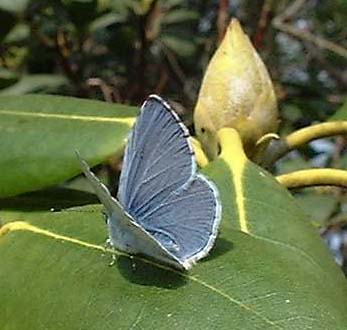 8
April 2002 8
April 2002
Common Newts,
Triturus
vulgaris, have returned to an ornamental pond in a garden on the edge
of the (SNCI) Sompting water meadows,
where Blue Tits
were using a box to build a nest. The garden is a blend of wild and tamed,
with trees and bramble and butterflies,
including the Holly Blue Butterfly
in the photograph.
Lancing
Butterflies
Lancing
Nature April Newsletter (by Ray Hamblett)
6 April
2002
A
brown
hawk took off from the scrub ground in the
north-east corner of Shoreham Airport, near to
where Honeyman's Hole is being filled in to construct a Telecommunications
Mast. I immediately thought of a female Kestrel
as
this is by far the most numerous of the hawks locally, but as it soared
away in the near gale force winds, it did not pause to hover, and its size
made me think that perhaps some of the smaller hawks I have seen in autumn
on the estuary margins were Merlins
and not young male Kestrels.
(One of these small birds of prey were photographed and found to be a Kestrel.)
This one could have been a Sparrowhawk
because of its lack of hovering, but the strong buffeting winds could be
responsible for this lack.
4 April
2002
 On
the warmest day of the year, I spotted my first white butterfly of the
year flying in off the shingle foreshore by the beach huts south of Beach
Green, Shoreham Beach. It was probably a Small
White, that could have been feeding as
a caterpillar on the Sea Kale.
Later more white butterflies were seen in one and twos in the town gardens
of Lancing. By midday, it was shirtsleeves weather (19º
C)
and on the northern part of Monk's Farm
between the the weighbridge and the
stroud
(TQ 193 056) there were numerous butterfly
flights. When they settled they were revealed as Peacock
(6+),
Small
Tortoiseshell (4+) and Comma
Butterflies (1), all nettle feeders at
the caterpillar stage. At the butterfly copse, Old Shoreham, (TQ
209 063), at least one Holly Blue
fluttered by the path to Mill Hill, which provided
a settling place for another Small Tortoiseshell
in the horse field. On
the warmest day of the year, I spotted my first white butterfly of the
year flying in off the shingle foreshore by the beach huts south of Beach
Green, Shoreham Beach. It was probably a Small
White, that could have been feeding as
a caterpillar on the Sea Kale.
Later more white butterflies were seen in one and twos in the town gardens
of Lancing. By midday, it was shirtsleeves weather (19º
C)
and on the northern part of Monk's Farm
between the the weighbridge and the
stroud
(TQ 193 056) there were numerous butterfly
flights. When they settled they were revealed as Peacock
(6+),
Small
Tortoiseshell (4+) and Comma
Butterflies (1), all nettle feeders at
the caterpillar stage. At the butterfly copse, Old Shoreham, (TQ
209 063), at least one Holly Blue
fluttered by the path to Mill Hill, which provided
a settling place for another Small Tortoiseshell
in the horse field.
 Lots
of butterflies on my walk from
Shermanbury
to Ashurst via the River Adur, including Peacocks,
Small
Tortoiseshells, and a Speckled
Wood north of Ashurst church. However,
the biggest surprise was the early Orange
Tip Butterflies, not expected until June. Lots
of butterflies on my walk from
Shermanbury
to Ashurst via the River Adur, including Peacocks,
Small
Tortoiseshells, and a Speckled
Wood north of Ashurst church. However,
the biggest surprise was the early Orange
Tip Butterflies, not expected until June.
Adur
Butterflies
3 April
2002
North
of Lock Bridge (on the River
Adur near Partridge Green), a Grass
Snake slithered away as I approached. There were herds of a greyish
deer, adults and young.
Three
Peacocks
Butterflies, at least two Brimstones
and a couple of Commas
on a walk around the Lancing Ring
meadows including McIntyre's Field.
2 April
2002
A
single Speckled Wood Butterfly
was spotted in a coniferous wooded garden near to Lancing Ring.
Adur
Butterflies

|

